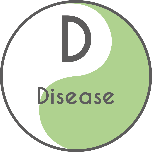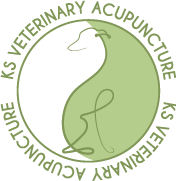
Osteoarthritis is a progressive condition which cannot be cured. It is also a dynamic condition with good days and bad days. The best we can do is to attempt to slow down the disease and be prepared to deal with flare-ups of symptoms and pain as and when they occur.
Signs of a flare-up:
- Changes in behaviour or demeanour – your dog may be quieter than normal or off their food.
- Joint swelling – gently run your hands down your dog’s legs and feel for any heat or swelling over affected joints. They may also react when you touch the area if they are painful.
- Increased stiffness or lameness – keep an eye out for any changes in mobility.
- Decreased activity – your dog may be less keen to go for a walk or to play with their toys.
The types of pain associated with osteoarthritis are often complex, involving nociceptive pain (pain associated with inflammation), neuropathic pain (nerve pain) and central pain (pain in the brain). Flare ups can involve any of these pain mechanisms and can be due to many different factors.
If you suspect that your dog is having a flare up, contact your vet for advice. You may be able to increase their pain medication for a few days – but it is important that this is under veterinary advice. It is also important to rest your dog for a few days until the flare-up settles down. This may mean just going out into the garden or a short way down the road to do their toileting. When you do start to reintroduce exercise, build this back up gradually.
There are things we can do to reduce the risk of flare ups from happening. This will help to protect the joints in the long term and will improve the dog’s quality of life.
Having a multimodal management plan in place helps to keep the disease in check and reduce flare ups. The plan can be modified during a flare up and over time as the needs of the pet changes.
With this in mind, let’s have another look at the six sections of the plan:

A is for Analgesia
Making sure the pet is receiving painkiller medication if required, regularly reviewing the medication and being prepared to make adjustments as required.

B is for Bodyweight
Making sure the pet is an ideal weight and body condition and regularly reviewing this. Being prepared to introduce weight loss measures if required. Looking at ways to maintain muscle mass if this is falling away.

C is for Comfort
Making sure that lifestyle choices prevent the joints from being subject to ongoing trauma. Constantly being mindful of the impact of everyday activities and making ongoing adaptations to keep the pet as comfortable as possible.

D is for Disease
Introducing measures which directly affect the disease process. This may initially be trying to prevent further cartilage loss and later on may be trying to repair and rebuild cartilage.

E is for Exercise
Introducing a regular and controlled exercise plan which is appropriate for each individual animal. This may need to be adapted as the pet ages and the disease process advances.

F is for Follow up
Reflecting on the plan regularly and evaluating achievements and goals. Developing a next-step plan.
The multi-modal management plan not only addresses the immediate needs of the pet, but also looks ahead to more long-term considerations. After the initial 4-6 week acupuncture course, many of my patients settle into a monthly acupuncture routine. Seeing each pet for a ‘top up’ treatment once a month also gives me chance to regularly re-evaluate the management plan and to hopefully reduce the chance of flare-ups from occurring.
If you are interested in finding out more about a bespoke multi-modal management plan for your pet then please contact us!
